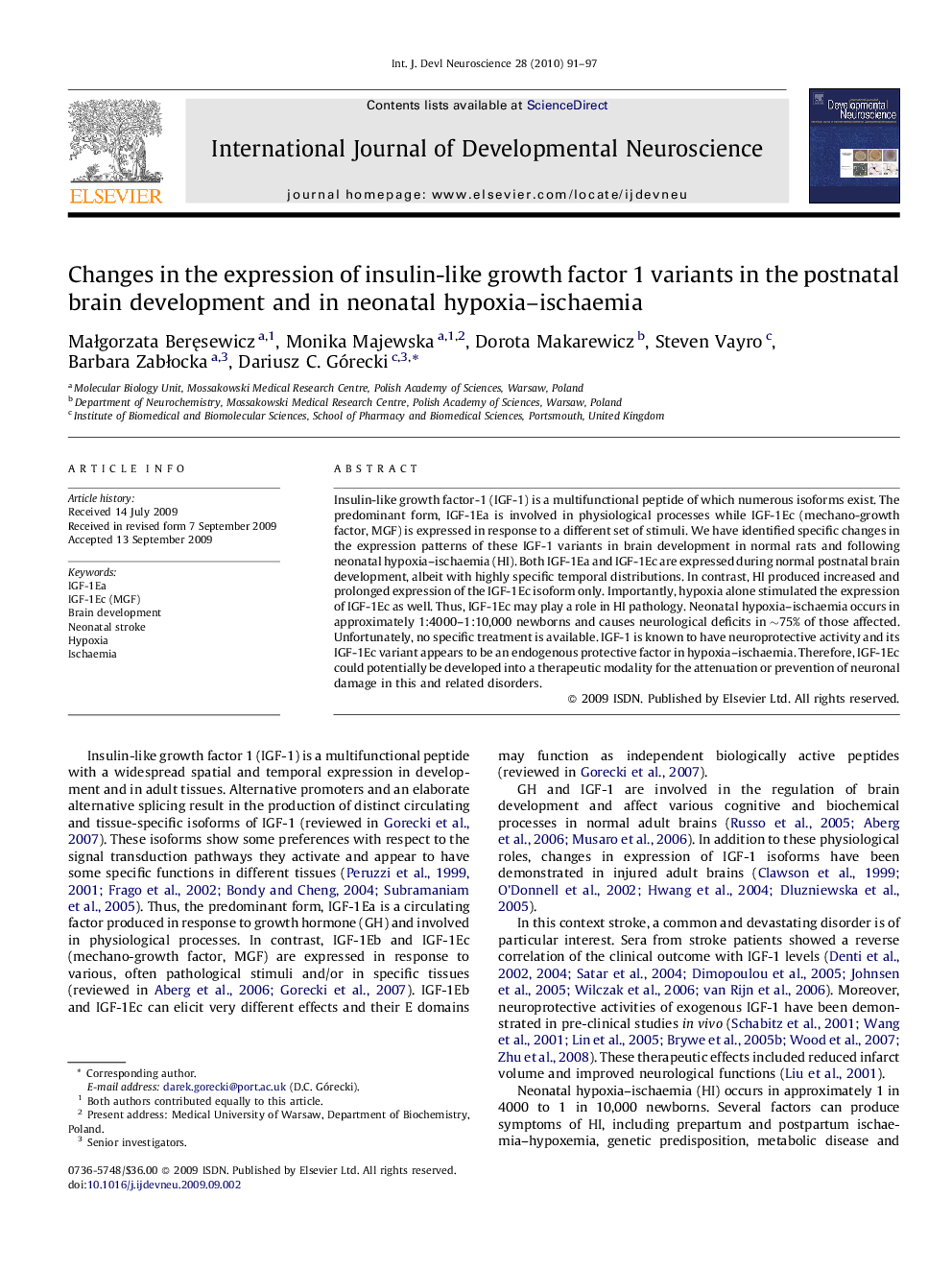| کد مقاله | کد نشریه | سال انتشار | مقاله انگلیسی | نسخه تمام متن |
|---|---|---|---|---|
| 2786890 | 1568431 | 2010 | 7 صفحه PDF | دانلود رایگان |

Insulin-like growth factor-1 (IGF-1) is a multifunctional peptide of which numerous isoforms exist. The predominant form, IGF-1Ea is involved in physiological processes while IGF-1Ec (mechano-growth factor, MGF) is expressed in response to a different set of stimuli. We have identified specific changes in the expression patterns of these IGF-1 variants in brain development in normal rats and following neonatal hypoxia–ischaemia (HI). Both IGF-1Ea and IGF-1Ec are expressed during normal postnatal brain development, albeit with highly specific temporal distributions. In contrast, HI produced increased and prolonged expression of the IGF-1Ec isoform only. Importantly, hypoxia alone stimulated the expression of IGF-1Ec as well. Thus, IGF-1Ec may play a role in HI pathology. Neonatal hypoxia–ischaemia occurs in approximately 1:4000–1:10,000 newborns and causes neurological deficits in ∼75% of those affected. Unfortunately, no specific treatment is available. IGF-1 is known to have neuroprotective activity and its IGF-1Ec variant appears to be an endogenous protective factor in hypoxia–ischaemia. Therefore, IGF-1Ec could potentially be developed into a therapeutic modality for the attenuation or prevention of neuronal damage in this and related disorders.
Journal: International Journal of Developmental Neuroscience - Volume 28, Issue 1, February 2010, Pages 91–97